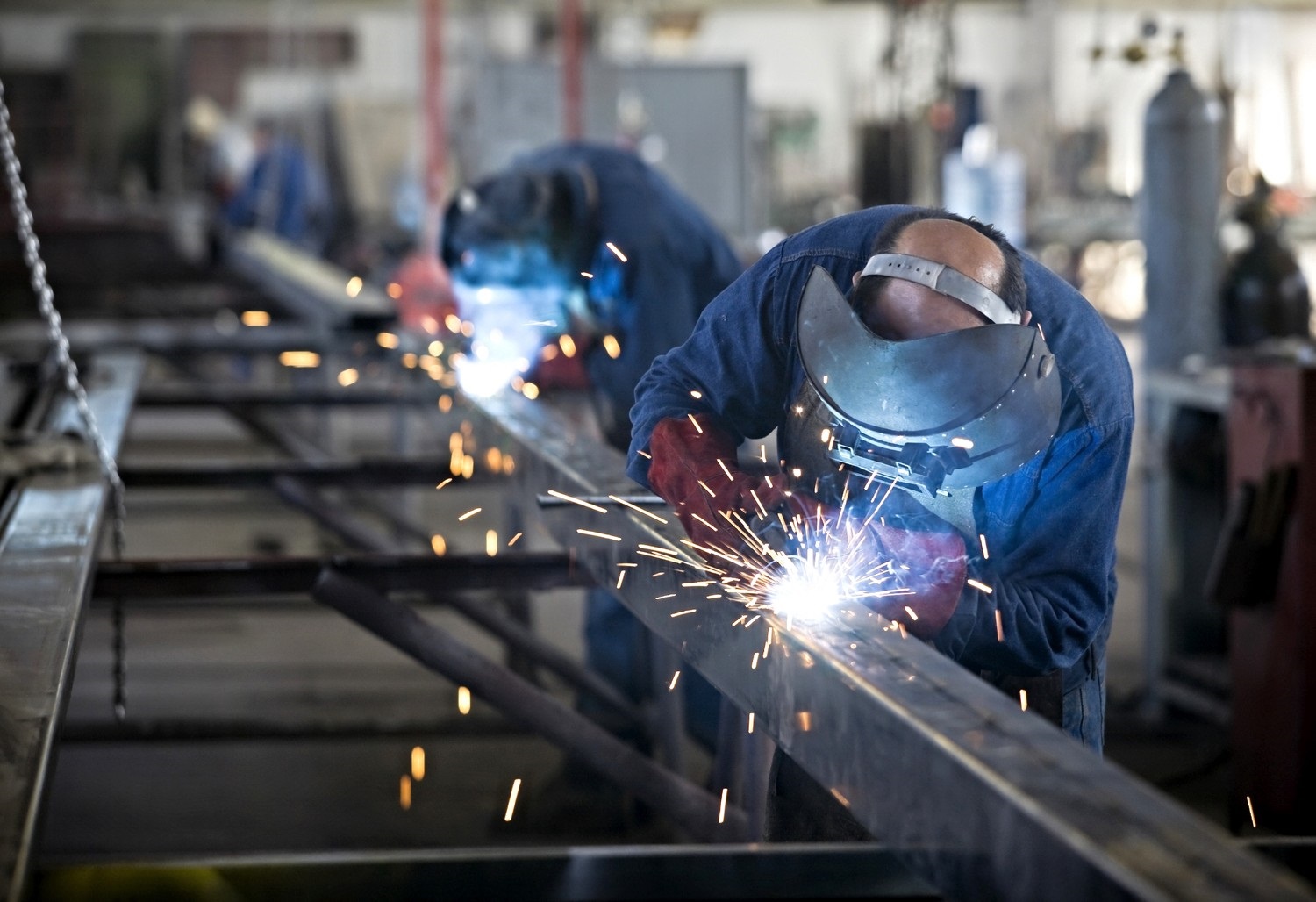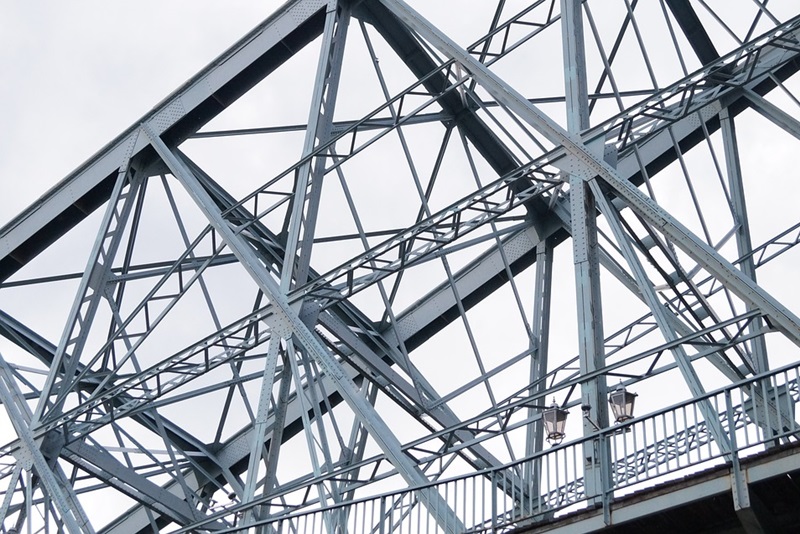Advanced Steel Fabrication Melbourne: Building the Future Today
Advanced Steel Fabrication Melbourne: Building the Future Today
Blog Article
Cutting-edge Fads in Steel Fabrication: Enhancing Resilience and Precision
In the world of steel construction, the pursuit of longevity and accuracy has brought about a wave of cutting-edge trends that are reshaping the industry. From developments in welding innovations to the assimilation of robot automation in construction procedures, the landscape of steel production is advancing quickly. High-strength alloy development, combined with the usage of 3D modeling and simulation software program, is pushing the borders of what is achievable in regards to structural stability and accuracy. The growing emphasis on lasting techniques in steel production is not just driving efficiency yet likewise fostering a more ecologically conscious approach to manufacture. These trends are not just forming the existing but also laying the foundation for the future of steel construction, promising additional improvements in sturdiness and accuracy.
Advanced Welding Technologies
In the realm of steel construction, the adoption of sophisticated welding innovations has dramatically transformed the industry's method to achieving exceptional quality and precision in architectural welds. Advanced welding innovations, such as laser beam of light welding and rubbing mix welding, have actually arised as game-changers in the area. Laser beam of light welding utilizes a focused laser light beam to sign up with metal elements with exceptional accuracy and speed, making it perfect for elaborate styles and thin products. On the other hand, rubbing mix welding produces unbelievably strong bonds by mechanically intermixing the particles of the materials at the joint, eliminating the need for thawing the steel. These modern technologies supply countless advantages, consisting of reduced heat-affected zones, very little distortion, and improved mechanical residential properties in the welded joints. By leveraging these advanced welding strategies, steel makers can elevate the durability, toughness, and accuracy of their architectural welds, satisfying the progressively demanding needs of modern building and construction jobs.
Robotic Automation in Manufacture
Embracing robot automation has actually come to be a keystone of modern steel construction techniques, boosting and simplifying processes effectiveness throughout the sector. Robotics are transforming the way steel parts are produced, using unrivaled precision and rate while lowering human mistake. These automated systems can handle repetitive tasks with constant precision, causing better end products.
One key advantage of robotic automation in steel fabrication is the ability to function all the time without tiredness, considerably raising production output. This continuous operation decreases downtime and speeds up task timelines, ultimately saving expenses for suppliers. In addition, robotics can be set to execute intricate jobs that may be challenging or dangerous for human employees, enhancing security in the work environment.
Additionally, robot automation allows smooth integration with other electronic technologies, such as computer-aided style (CAD) software program and Internet of Things (IoT) systems (steel fixing). This interconnected approach enhances communication in between different stages of manufacture, enhancing operations and ensuring real-time tracking and control. As the steel fabrication market proceeds to advance, robotic automation sticks out as a transformative pressure driving effectiveness and accuracy in making procedures

High-Strength Alloy Advancement
The innovation of high-strength alloy growth in steel construction is improving the market's method to improving material toughness and performance. High-strength alloys are engineered to display exceptional mechanical properties, such as increased tensile strength, toughness, and deterioration resistance contrasted to typical steel qualities. By integrating these sophisticated alloys into fabrication processes, producers can produce components that withstand greater anxiety levels and severe environments, leading to more durable and reliable output.
One key advantage of high-strength alloy growth is the capacity to reduce product thickness without compromising architectural stability. This not only causes lighter-weight elements yet likewise adds to set you back financial savings and improved performance in manufacture and assembly processes. Additionally, the enhanced strength-to-weight proportion of these alloys permits the layout and building of frameworks with greater load-bearing capacities while decreasing general weight.
3D Modeling and Simulation Software
Advancements in steel manufacture procedures have been considerably moved by the assimilation of sophisticated 3D modeling and simulation software application tools. These tools allow makers to create in-depth online designs of their tasks, allowing them to imagine the final product with precision prior to any kind of manual labor begins. By mimicing numerous tension factors, ecological problems, and structural loads, producers can maximize layouts for enhanced toughness and efficiency. In addition, 3D modeling and simulation software program improve the production procedure by recognizing prospective problems beforehand, reducing the need for pricey rework other and lessening material waste.

Sustainable Practices in Steel Manufacturing
Integrating lasting methods into steel manufacturing processes is necessary for minimizing ecological influence and ensuring long-term source accessibility. One crucial lasting method is the fostering of energy-efficient innovations to reduce greenhouse gas discharges during the steel production process. This consists of making use of renewable resource sources, such as solar or wind power, to power steel plants and executing energy-efficient equipment to optimize energy usage.
An additional crucial facet of sustainable steel manufacturing is the accountable sourcing of basic materials. This involves ensuring that the iron ore and other resources utilized in steelmaking are obtained from moral and ecologically friendly sources. By advertising transparency in the supply chain and sticking to stringent environmental criteria, steel producers can decrease the unfavorable influences of resource removal on regional environments and areas.

Conclusion
To conclude, the ingenious trends in steel construction such as sophisticated welding innovations, robotic automation, high-strength alloy development, 3D Get More Info modeling and simulation software program, and sustainable techniques are improving the toughness and accuracy of steel items. These improvements are transforming the steel construction sector by enhancing sustainability, high quality, and efficiency. It is clear that the future of steel construction lies in welcoming these innovative modern technologies to fulfill the demands of modern construction and production industries.
In the world of steel fabrication, the search of toughness and accuracy has actually led to a wave of cutting-edge trends that are reshaping the industry.In the realm of steel manufacture, the fostering of cutting-edge welding innovations has considerably changed the market's technique to achieving remarkable quality and accuracy in structural welds. As the steel construction industry proceeds to develop, robotic automation stands out as a transformative pressure driving steel fabricators melbourne efficiency and accuracy in manufacturing processes.
Furthermore, recycling and recycling steel scrap and waste products play a considerable duty in enhancing the sustainability of steel manufacturing. Alpha reo.In final thought, the innovative patterns in steel construction such as innovative welding modern technologies, robotic automation, high-strength alloy growth, 3D modeling and simulation software program, and lasting techniques are boosting the toughness and precision of steel items
Report this page